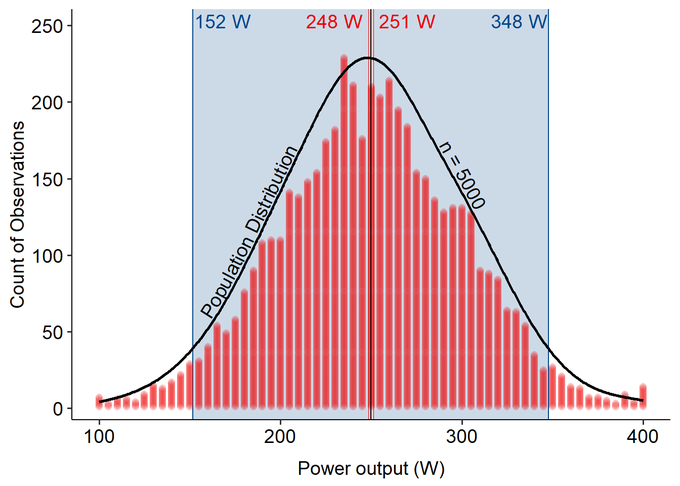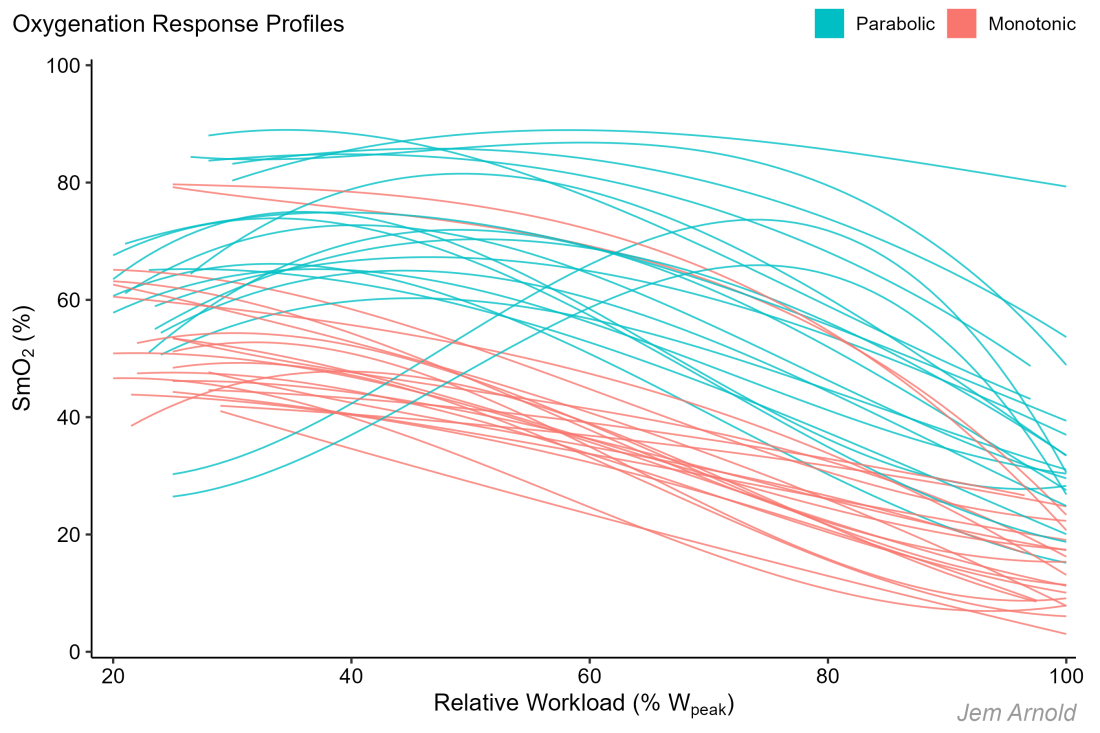How accurate is your gadget of choice at predicting your individual response to exercise? How close is your watch's V̇O₂max estimate? How close was the predicted race time to your real results? How far apart are your FTP/threshold estimates between a ramp test, a 20 minute test, and a 40-60 minute time-trial? How come with … Continue reading Interpreting Group-Level Data for Individual-Level Application
Category: Performance Assessment
Muscle Oxygenation Response Profiles during 5-1 Cycling Assessment
Oxygenation Response Profiles represent the SmO2 trend as a function of progressive exercise intensity measured at the vastus lateralis. Two general profiles have been observed that may reveal some so-far unexplained, but apparently systematic physiological variance between subjects of differing fitness and muscle tissue typology. Unexplained variation means we still have something to learn about human physiological response to exercise.
Predicting Cycling Time To Exhaustion from Paraspinals Muscle Oxygenation
Our hypothesis is that the linear extrapolation of PS SmO2 during the work stage can predict time to exhaustion, when performed to task intolerance. Across both male and female subjects, we have seen that in 27 of 36 trials, both the vastus lateralis and paraspinals oxygenation slopes provide a reasonable prediction of TTE.
Evaluating the Relationships between Muscle Oxygenation, Ventilation, and Lactate Thresholds
The next generation approach to metabolic profiling and training prescription will almost certainly not include breakpoints or thresholds at all, and will use more flexible methods of describing continuous physiological response profiles in real-time. I think that by defining the rules which our brains are already using to find patterns, we will be able to better understand the real physiological relationships for an individual athlete, and improve how we can apply insights to that individual athlete's training.
CoreTemp Heat Accumulation Test
I have been experimenting for the last few weeks with the CORE BodyTemp sensor. This solid little device estimates core temperature from measuring thermal energy transfer at the skin. The CORE development team recently posted a 'heat ramp test', which I'm calling a 'Heat Accumulation protocol' because it involves more than just a ramp test.




